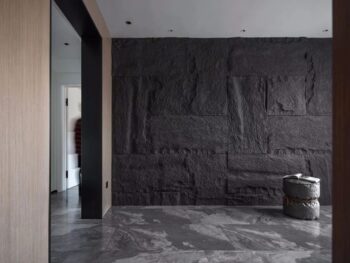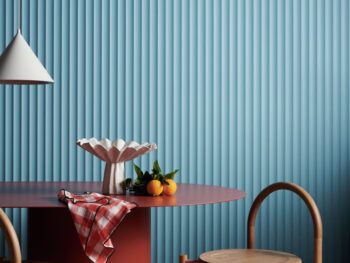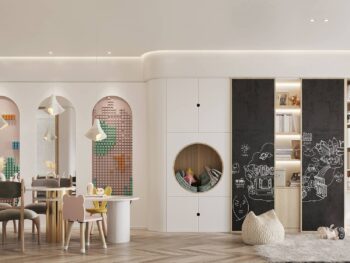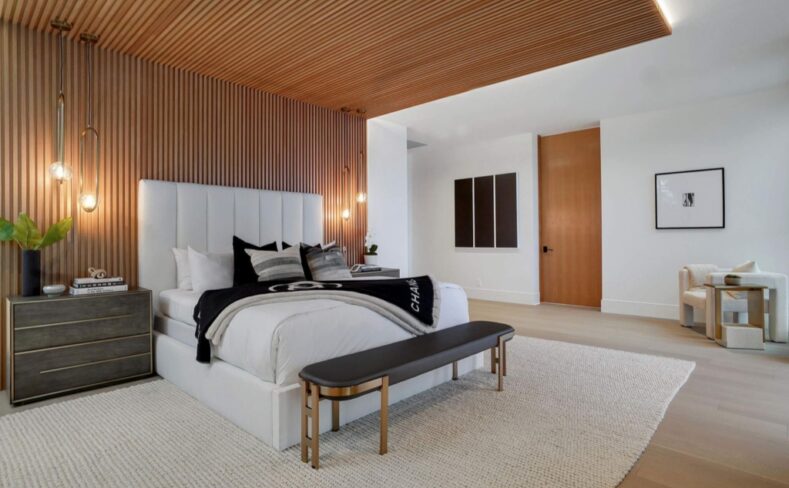
The Ultimate Comprehensive Wall Panel Guide
Welcome to the ultimate guide to siding! Wall panels are an eye-catching option in interior decoration, not only adding a unique look to a room but also providing practicality and protection. From wood to plaster, traditional to contemporary, wall panels come in a variety of types and designs to suit every room and decor style.
In this guide, we’ll explore the different types of siding, decorative effects, and how to choose the one that best suits your needs. Let’s dive into the subtleties of siding to provide comprehensive guidance and inspiration for your renovation project!
Related Articles
Custom Wall Panels: Personalized Design Solutions
New Trends in Custom Wall Panels in 2023
Historical Evolution and Classic Styles of Wall Panels
I. What is wall panel?
Wall panels are a very smart way to decorate your interior walls by applying wall panels that provide texture to a room that may lack a bit of charm or character. Wall panels bring charm and character to any room. Typically, wall panels are flat and cut into a specific shape, usually a strip of material that can be used to form geometric shapes such as squares, rectangles, or even hexagons! The panels are glued to the wall to create a unified design.
There are many types of wall panels, common ones include:
1. Wooden wall panels
Made from solid or composite wood, sometimes including wood fiberboard or fiberboard. This type of siding typically has a natural look and feel and is suitable for both traditional and contemporary style decor.
2. Gypsum board
Also known as gypsum wallboard or drywall, it is made from gypsum or other synthetic materials. They are lightweight and easy to install and are often used on interior walls.
3. Metal wall panels
Usually made of aluminum, steel or other metal materials. These siding panels offer durability and a contemporary look and are often used in commercial buildings or modern-style home renovations.
4. Plastic or WPC wall panels
Made of wood-plastic composite or other plastic materials, it is easy to clean and maintain and is suitable for humid environments.
5. Composite wall panels
Wall panels that combine different materials, such as wood particles mixed with adhesives, cellulose, etc. These sidings often offer durability and a variety of appearance options.
Wall panels are not only used to decorate the wall, they can also provide a certain degree of sound insulation, heat insulation, and help protect and maintain the wall. Choosing the right type of siding depends on factors such as decorating style, functional needs, and budget considerations.
II. When was wall panel invented?
Believe it or not, paneled walls are not a modern phenomenon, this decorative wall technique dates back hundreds of years.
The history of siding is as rich as its aesthetics. Many of the paneling styles we see today evolved from earlier methods of wall paneling. Wall panels emerged as a necessity in the 13th century. Wooden siding was used to insulate and prevent moisture from penetrating into the stone walls that were used to build homes at the time.
Over time it became more and more popular and it was seen as a means of adding a decorative touch to a room and providing warmth. It was even favored by King Henry III. He went to great lengths to achieve his goal of paneling, importing wood from Norway and using it to decorate the rooms of Windsor Castle.
As the centuries passed, paneling became a fine art. Decorations and embellishments are added, and the style of the panels transforms into ornate and intricate pieces. When the English Renaissance arose, decorative paneling became more subdued and simple in design. Wood paneling became a staple of country estates and grand homes. They are a common feature of classical Georgian interior design.
In the 18th century, a new style of wall paneling emerged. Commonly known as siding paneling. It takes its name from the Danish Siding Oak. A siding style can be identified by its placement on the wall, typically the panels only cover the lower portion of the wall with a wainscot railing above.
Over time, siding has developed more and more, including Georgian siding, Victorian siding and the striking wainscoting style, many of which you’ll find at the Palace of Versailles Beautiful example of.
In the 21st century we are seeing a resurgence of the paneled wall trend, which is the culmination of all the different paneling styles developed over the centuries. Now available in your home.
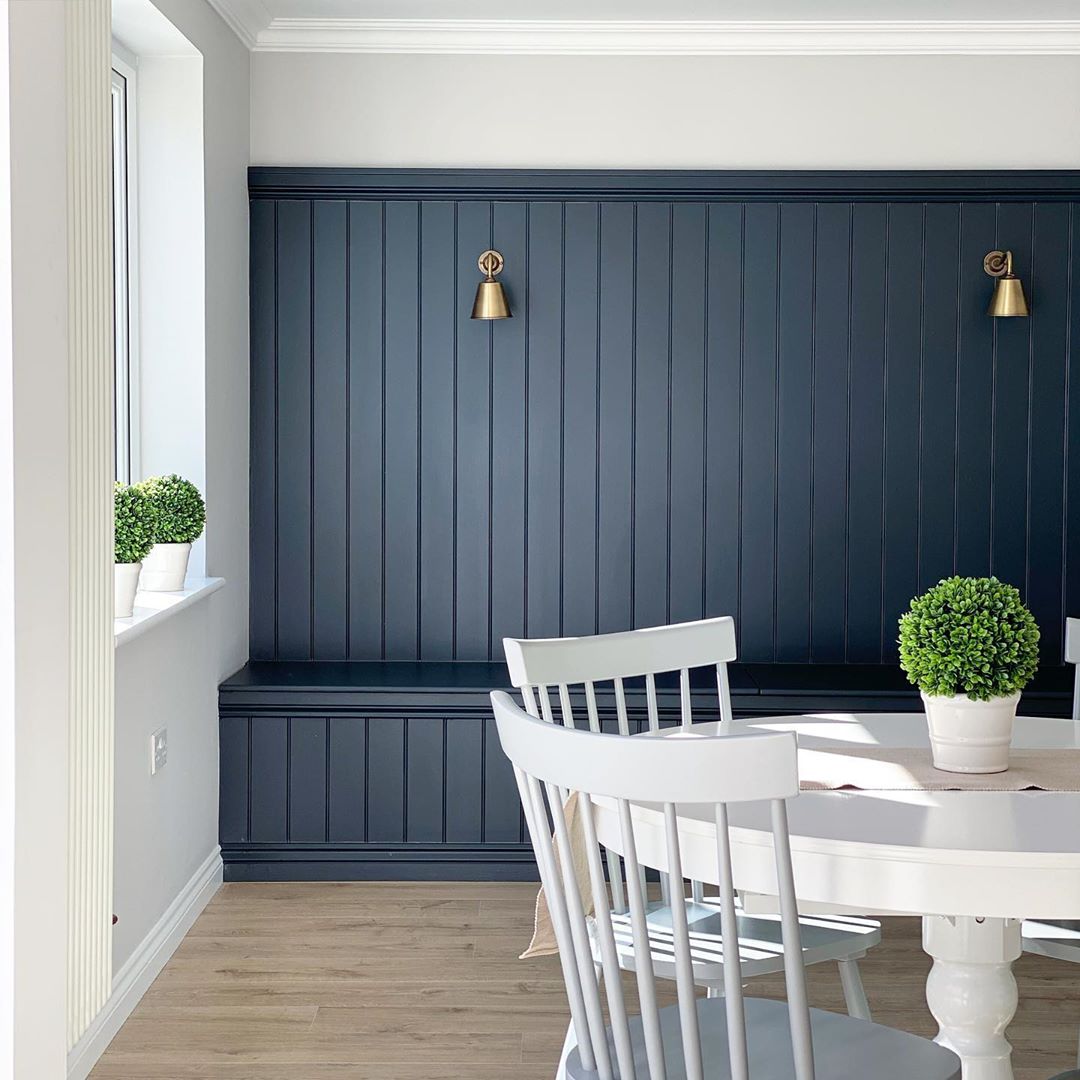
III. Why install wall panels?
1. Decoration and beautification
Wall panels can add beauty and decorative effect to interior walls. Wall panels of different materials, colors, and textures can add depth and character to a room, hide uneven surfaces and marks, and create a different decorative effect that makes a space more comfortable and inviting.
2. Protect the wall
Wall panels protect walls from wear, scratches, or other damage from daily use and the outside environment. Certain types of wallboard such as drywall or wood siding can increase the durability of the wall and reduce damage from daily use, thus extending the life of the wall and reducing the need for maintenance.
3. Thermal and sound insulation
Certain types of wall panels have thermal and sound insulation capabilities, providing a degree of thermal insulation and reducing the transmission of sound, improving indoor comfort and quietness.
4. Easy to clean and maintain
Some siding types, such as plastic or PVC siding, have smooth surfaces that are easy to clean and easier to maintain than bare walls, making cleaning and maintenance easier.
5. Increase structural strength
The installation of wall panels can enhance the structural strength of the wall, provide a certain protective function, and reduce the vulnerability of the wall under certain circumstances.
6. Increase insulation performance
Wall panels can provide a degree of insulation, helping to keep indoor temperatures stable and reduce energy consumption.
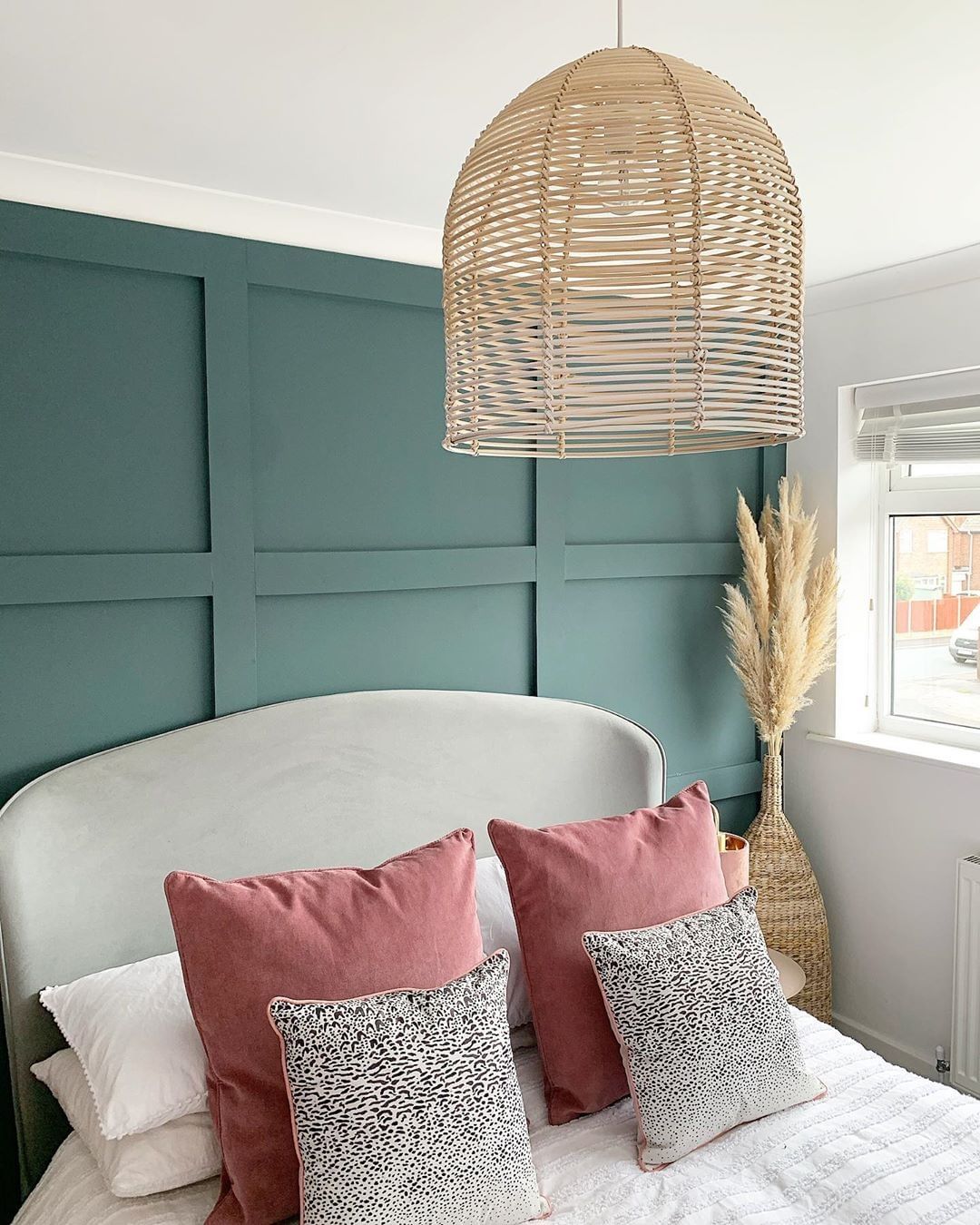
IV. Wall panel terminology
Choosing the perfect panel can be tricky, there are so many wall paneling ideas out there, and it can be overwhelming when you’re looking for a little paneling inspiration.
If you don’t like traditional panel patterns, there are some eye-catching and fashion-forward siding styles on the market. Last year we saw a huge rise in the popularity of paneled walls. Victorian style walls as well as Shaker, Jacobean and Georgian siding are increasingly in demand. There are many styles to choose from. Social media is awash with bizarre wall designs in a variety of different applications. From exclusive interior design experts to the domestic market, it seems like everyone is embracing the wall paneling trend.
Sometimes it can be difficult to distinguish one siding style from another. Over the years many panel designs have been confused, with the Shaker style incorrectly labeled as the Jacobean style and so on. Maybe you’re not sure what the name of the siding style you’re looking for is, we’ve listed the most popular siding types below:
1. Batten – MDF tongue and batten groove wall panels
This type of wall paneling usually consists of 100 mm to 120 mm wide slats. The strips are then placed vertically side by side on the wall. Most commonly, they are attached to the lower part of the wall and covered with wainscot railing, but they can cover the wall from floor to ceiling or be placed horizontally, it really depends on your preference.
2. Shaker style wall panel
Shaker style siding is very popular right now. You can identify Shaker style paneling by its evenly spaced rectangular shapes, as shown in the image below. Shaker is a classic form of paneling found in elegant estates and high-end hotels. You may recognize this pattern because it is also used on the fronts of cabinets.
3. Jacobean style wall panels
This style of siding is often confused with Shaker style siding, but it is completely different. Featuring a Jacobean design, the panels are square and look like a chessboard when installed. This is a popular wall paneling option for interior rooms such as bedrooms, dining rooms, and living rooms.
4. Geometric style wall panels
Geometric wall panel patterns are a newcomer and can be thought of as wall panels with a modern twist. Geometric paneling is a great option if you want to highlight a wall, much like a feature wall, it is usually installed in just one area. Geometric panels are often made up of very thin strips, which are then positioned to create a modern design. Thin strips can be placed horizontally, vertically and diagonally. Once the entire wall is painted, it takes on a very smart and cool aesthetic.
5. Design inspiration
Using siding to create a feature wall is a popular design choice, whether it is floor-to-ceiling or siding installed. From contemporary square or even rectangular panel designs, this will have a transformative effect on any space by creating the illusion of depth, height and character.
Not only that, wall panels can be installed according to any decor or color scheme to create a unique design. By experimenting with color, you can introduce a new design trend into your space with just one wall.
When it comes to siding, sometimes less is more. Choosing to panel just one wall rather than the entire room can help create a focal point and reduce the workload.
If you really want to make a statement, square wall panels work best, while decorative wall panels can help create a more sophisticated look. Siding wall cladding is also a popular choice for hallways, home entrances and smaller spaces.
VI. Different materials used to make wall panels
When it comes to siding products, you have a variety of options. When it comes to the materials that can be used for panelling, there are three main types, we have modern options of MDF, WPC/PVC composite wall panels or traditional technology wooden wall panels.
Wall panels can be made from a variety of materials, common ones include:
1. Wood
Solid or engineered wood are common siding materials that provide natural texture and texture. Can be solid wood or composite wood. There are various types of solid wood boards, such as oak, pine, birch, etc. Composite wood panels are made from multiple layers of wood bonded together for greater stability and durability.
2. Gypsum board
Gypsum board is a lightweight building material consisting of a gypsum core and a paper surface. It is suitable for use as wall panels, is easy to install and has good thermal and sound insulation properties.
3. Wood-plastic composite materials
WPC stands for Wood-Plastic Composite, which is a composite material that combines wood fibers and plastic. WPC wall panels are materials with the texture of wood and the durability of plastic.
PVC (polyvinyl chloride) is a common plastic siding material that is particularly suitable for areas where waterproofing is required, such as bathrooms or kitchens.
So what’s the difference?
First, MDF is a more cost-effective option. Wood siding is expensive and installation should be done by an experienced carpenter. Unless, of course, you know what you’re doing. MDF wall panels are much easier to install yourself, requiring less time and skill, and you can use them to replicate a variety of wall panel styles. You can buy MDF siding online as a kit or directly from MDF, which you can then cut to size yourself.
VII. Which rooms can I install wall panels on?
The versatility of the siding trend means it can fit into any aesthetic, whether it’s a traditional country farmhouse decor or a quirky metropolitan townhouse interior. There are no rules other than measuring the area ahead of time and priming the siding. The rest is just a guide.
Wall panels are not restrictive, you can install them in any room you like. Maybe not the garage, but you can certainly install wall panels in bedrooms, bathrooms, dining rooms, and other areas to add both decorative effect and functionality.
The following are common room types suitable for wall panels:
1. Living room
Living rooms are a common choice for wall panels, which can add a decorative touch and give the entire room a unique vibe. You can choose wall panels of different materials and designs to suit your living room décor.
2. Dining room
Installing wall panels in your dining room can add comfort and decoration to the space. Especially above the waistline or as the background wall of a dinning room, wall panels can create a unique atmosphere for the dining area.
3. Bedroom
Bedroom wall panels can bring warmth and decorativeness to private spaces, especially as a bedside background wall. Choose soft colors and comfortable materials to harmonize the wall panels with the bedroom ambience.
4. Office/study
Wall panels can also bring a unique decorative effect to an office or study, helping to enhance the atmosphere of working or studying.
5. Bathroom
Certain types of siding, such as plastic or PVC siding, are particularly suitable for use in bathrooms because they are water-resistant, easy to clean, and can add to the decorative look of a bathroom. We strongly recommend using MR MDF only in rooms such as kitchens and bathrooms. MR stands for Moisture Resistant, which doesn’t mean it’s waterproof, just that it has a higher resistance to moisture than standard MDF. This is important for rooms that may occasionally get splashed.
6. Entrance/corridor
Installing wall panels in entryways or hallways can add character to these spaces, making them feel more welcoming and cozy.
Whether it’s a primary living area or a secondary space, wall panels can add character and decorative accents to a room. Choosing a wall panel type and design that suits the room’s purpose and decor can give the entire room more personality and appeal.
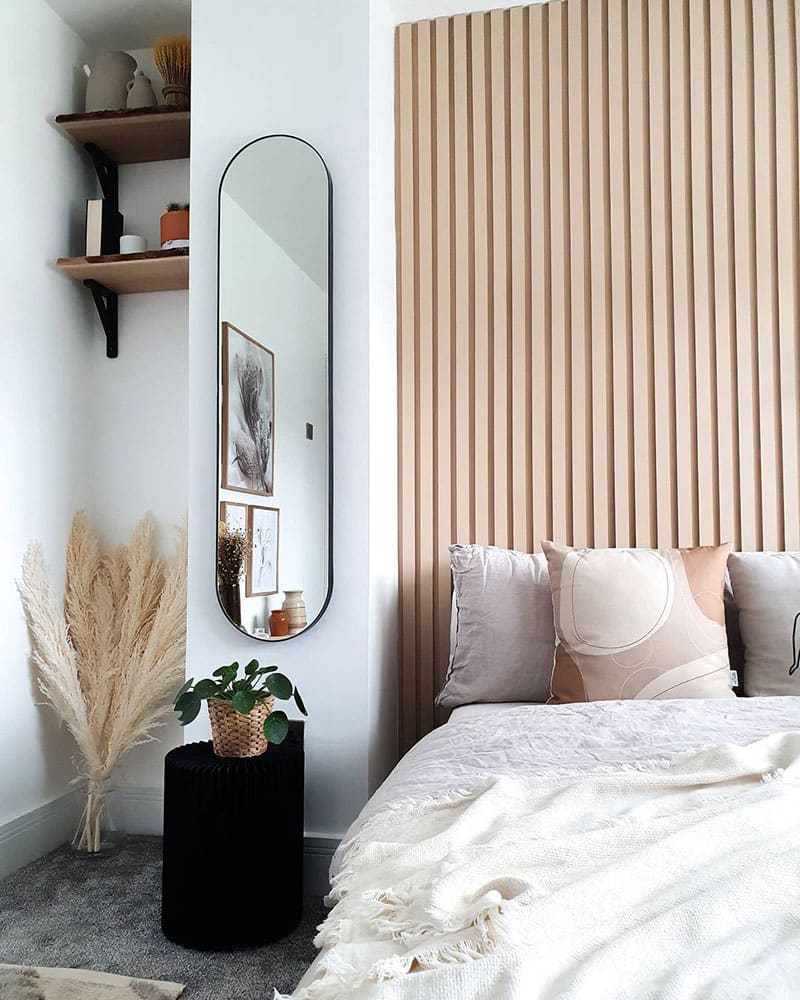
VIII. Will wall panels make my room look smaller?
There are a few different factors that could cause this – the height of the wall panels, the amount of natural daylight the room receives, and the color you decide to paint the wall panels and the rest of the room. When choosing the height of your wall panels, larger rooms are better suited for floor-to-ceiling installations. In a room that only receives average natural daylight, it’s best to keep neutral tones to maximize the space. Ultimately, if you want a small room to appear larger, it’s best to use lighter shades.
Wall panels don’t necessarily make a room look smaller, in fact, properly selected and arranged wall panels can change the visual perception of a room, making it appear more spacious and comfortable. Here are some ways to avoid wall panels making a room look smaller:
1. Choose the right color and material
Light wall panels and bright colors allow light to reflect better, adding to the brightness of the room and making it appear more open.
2. Reasonable layout and design
By carefully designing and arranging wall panels, you can take advantage of the vertical and horizontal lines of the wall panels to increase the feeling of space. For example, using vertical wall panels in a small space can create a sense of height, while horizontal wall panels can add a sense of width to the room.
3. Avoid excessive decoration
Too many decorative elements can give a room an oppressive feel. Choose simple, refreshing designs and styles and avoid too many complicated decorations to make the space look more open.
4. Combine with other decorative elements
Wall panels are not the only element that affects the perception of a room. Incorporating decorative elements such as appropriate furniture, lighting, and flooring can better balance the proportions of a room and make it appear more spacious.
5. Pay attention to the installation location
When installing wall panels, consider choosing local walls for decoration rather than every corner of the entire room. Partial wall paneling can highlight specific areas without making the entire room feel cramped.
Therefore, wall panels do not necessarily make a room appear smaller, the right choice, design and arrangement can make it a decorative element that increases the beauty and comfort of the room.
IX. How much does it cost to install wall panels at home?
The cost of installing siding will vary based on a variety of factors, including the following:
1. Material cost
Costs vary depending on the type and quality of siding. Prices can vary greatly from basic wood siding to higher-end composite or custom-designed siding.
2. Labor costs
Hiring a professional to do the installation may add extra costs, but doing it yourself can save you money. Professional fees vary by location and experience level.
3. Tools and Materials
In addition to the cost of the siding itself, you also need to consider the cost of the tools required and other materials required for installation, such as screws, glue, adhesives and patching materials.
4. Wall preparation
If the wall requires repair or preparation work, such as filling cracks, plastering, or smoothing, these additional costs will also need to be taken into account.
The best practice is to determine the type and quality of siding you want and then consult a professional for an accurate quote and recommendation.
X. Conclusion
In the world of siding, variety and creativity are undoubtedly the dominant factors. No matter which style or material you choose, siding can bring unique character and charm to your home. We hope this guide has provided you with a comprehensive understanding, from choosing wall panel types to installation techniques, to considering decorative effects, so that you can be more comfortable and confident during the renovation process. Don’t forget to consider the overall ambience and functional needs of the room and choose the right wall panels to add warmth, beauty and functionality to your home. I wish you a happy wall paneling journey and create a beautiful space that stands out! If you have any further thoughts or questions, please feel free to contact us at any time!
Quick Quotation

